Abstract
Samples of green and brown leaves of eelgrass (Zostera marina L.) were incubated in seawater without an additional carbon source. Parallel leaf samples were used for acridine orange bacterial counting and water-soluble aniline blue estimation of fungal biovolume. The incubations produced no evidence that there is an eelgrass counterpart for the chytridialean symbiont which is very common in turtlegrass (Thalassia testudinum König). Sterile mycelium (i.e., living mycelium without identifiable propagules) was the most prevalent fungal form on incubated samples from submerged sites, whereas Dendryphiella salina and Sigmoidea sp. (marina?) were prevalent on brown leaves from the wrack line. Attempts to assay fungal biovolume in field samples indicated that the sterile mycelium observed after incubation represented the outgrowth of formerly dormant propagules or weakly established microcolonies. It was calculated that fungal biomass could not account for more than 0.5% of leaf mass, and it was probably much smaller than this, for no fungal structures were observed even in concentrated leaf homogenates. Bacterial densities fell within the range reported for other particulate substrates. A speculative estimate of bacterial productivity was 1.4× the standing stock per day.
Full text
PDF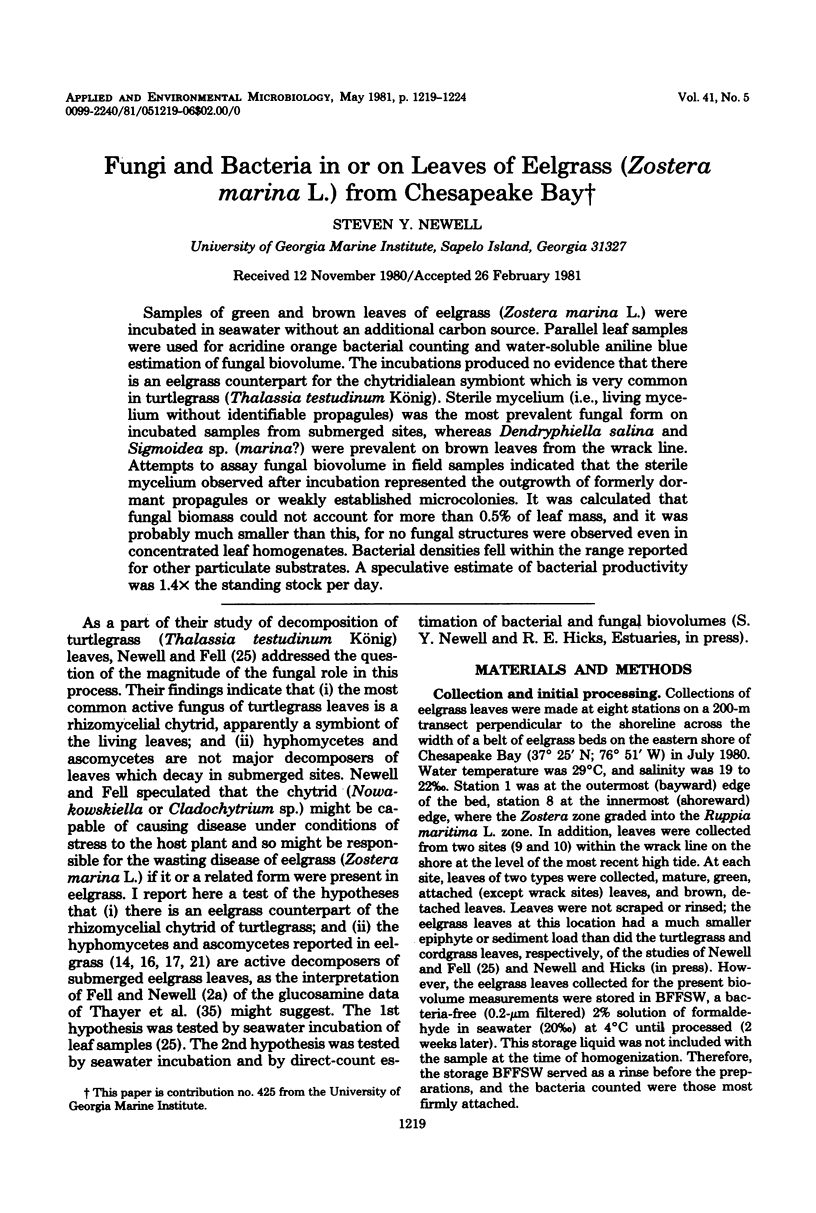
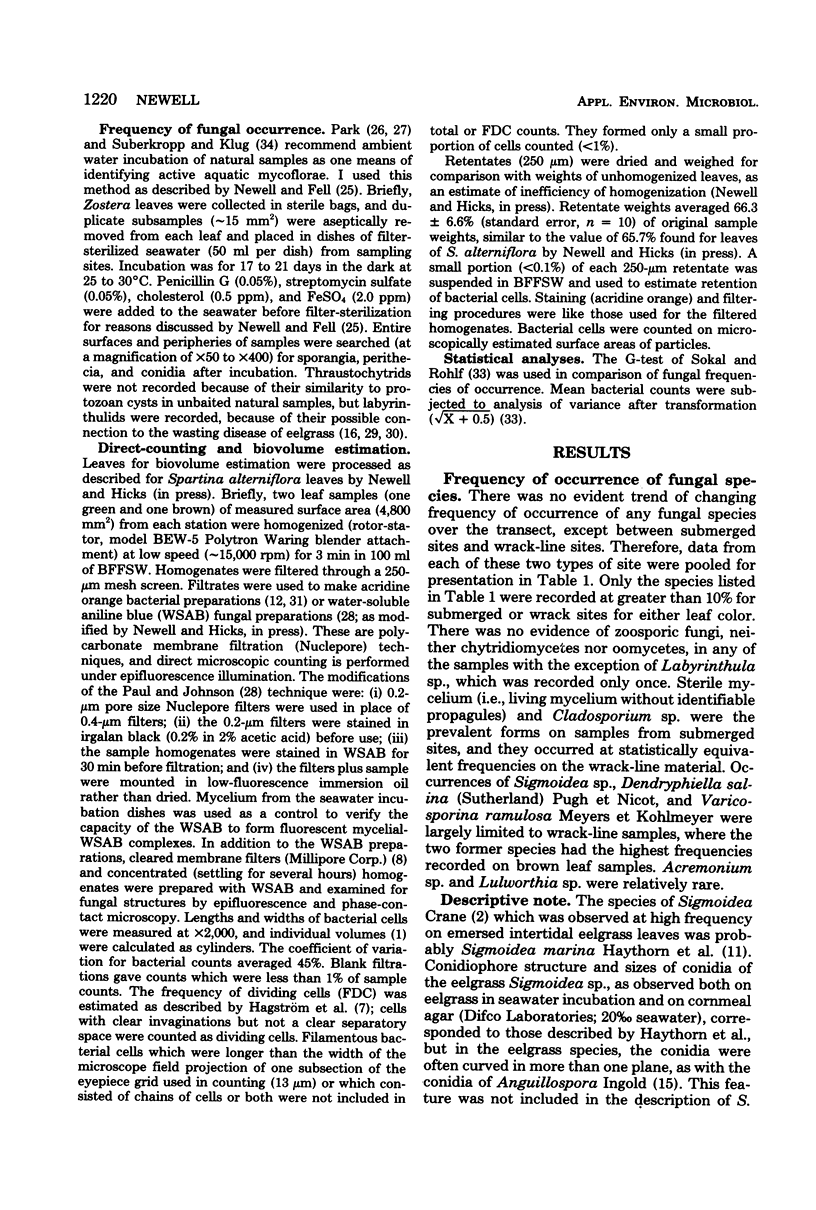
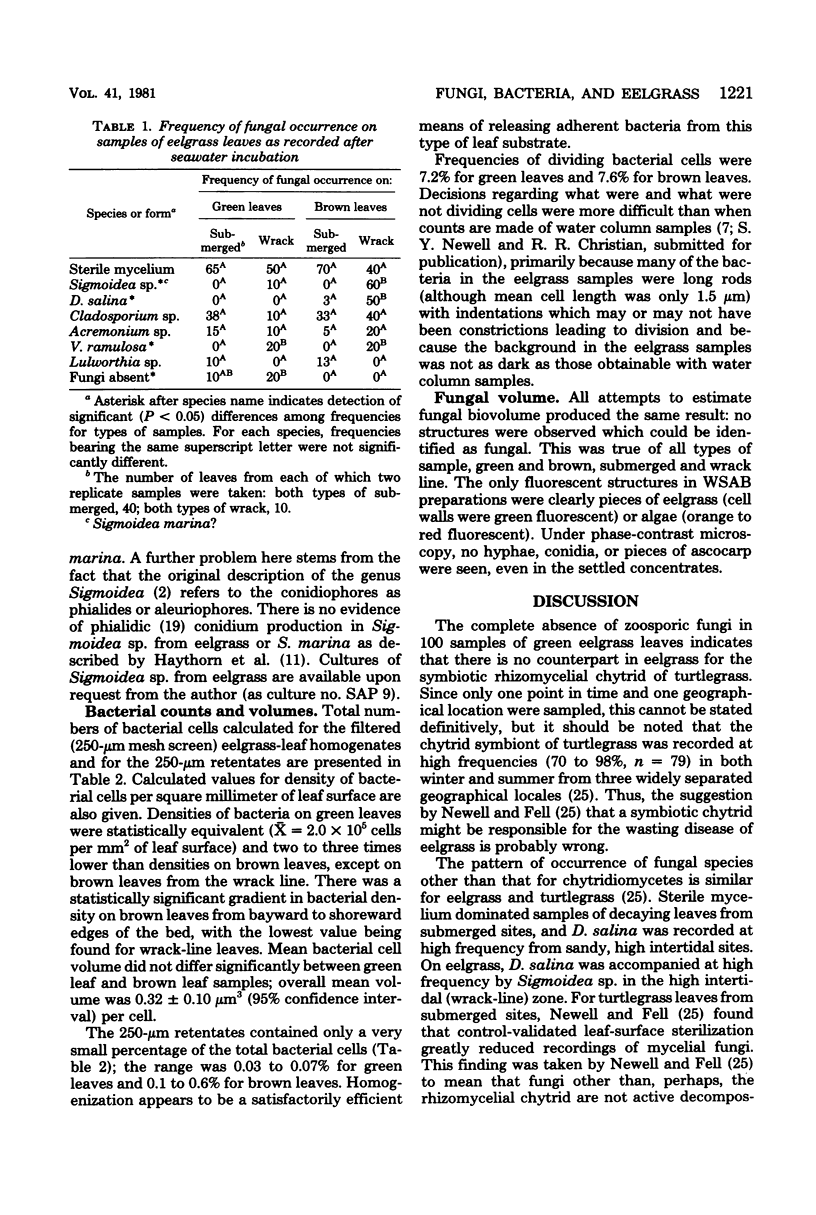
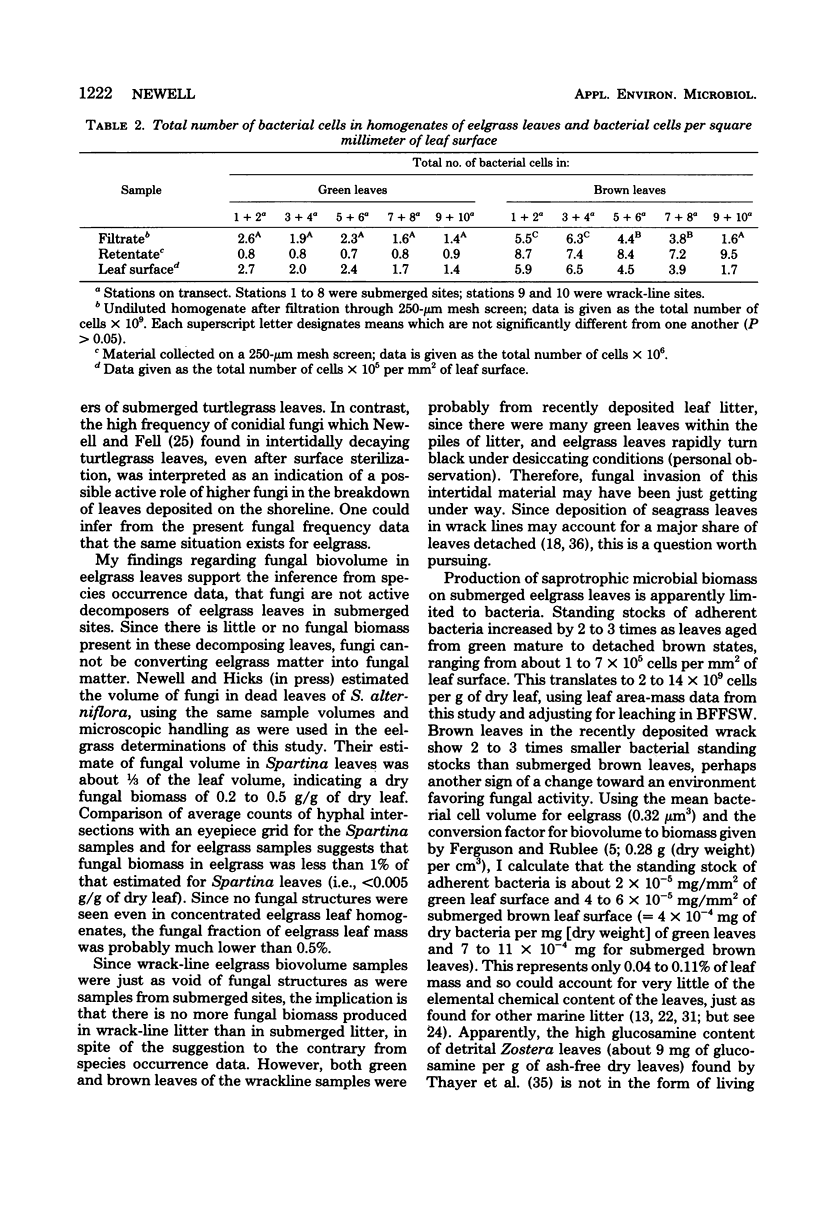
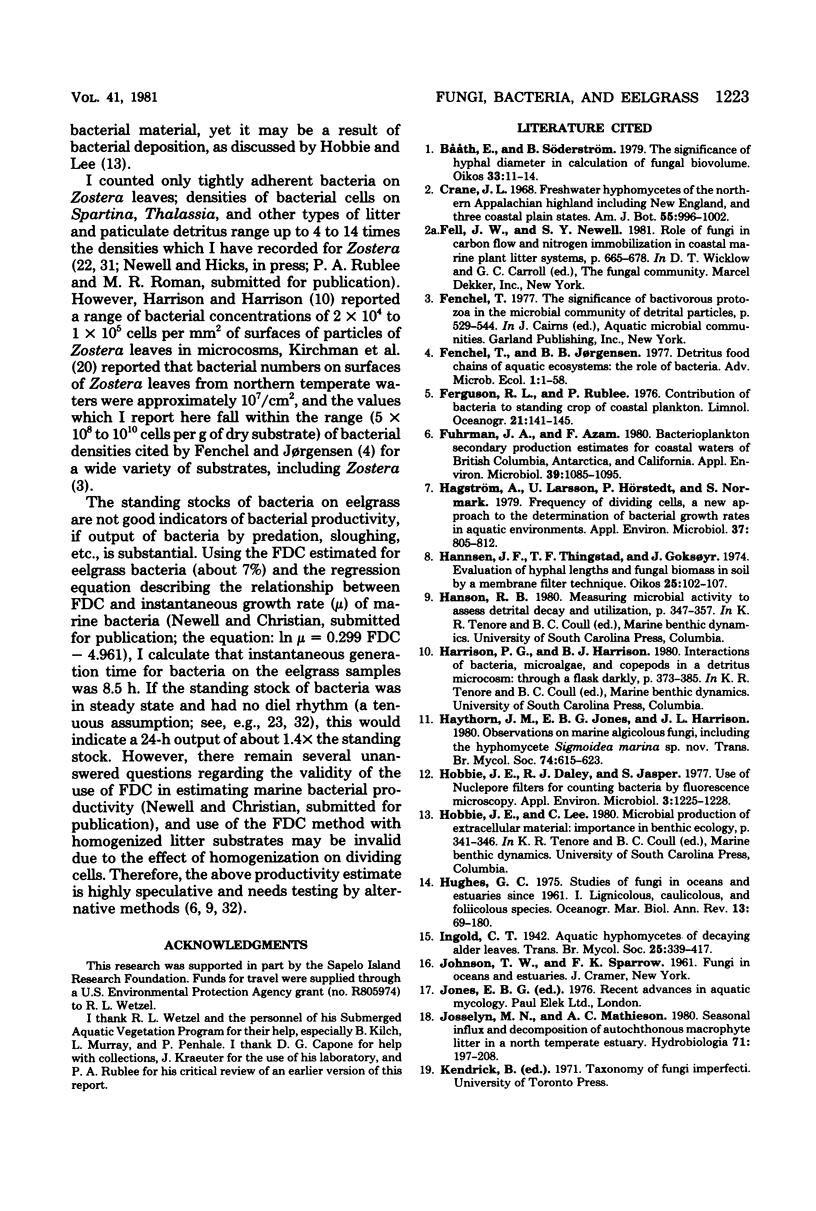
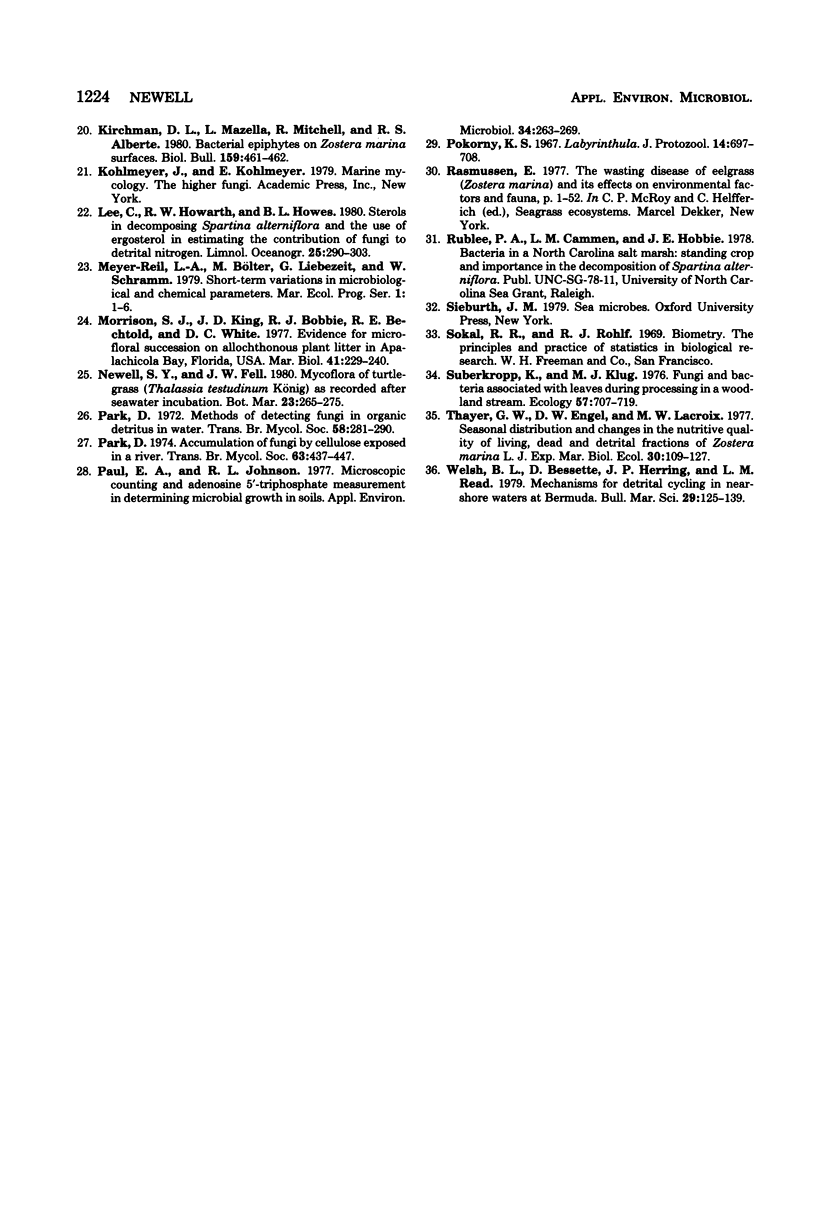
Selected References
These references are in PubMed. This may not be the complete list of references from this article.
- Fuhrman J. A., Azam F. Bacterioplankton secondary production estimates for coastal waters of british columbia, antarctica, and california. Appl Environ Microbiol. 1980 Jun;39(6):1085–1095. doi: 10.1128/aem.39.6.1085-1095.1980. [DOI] [PMC free article] [PubMed] [Google Scholar]
- Hagström A., Larsson U., Hörstedt P., Normark S. Frequency of dividing cells, a new approach to the determination of bacterial growth rates in aquatic environments. Appl Environ Microbiol. 1979 May;37(5):805–812. doi: 10.1128/aem.37.5.805-812.1979. [DOI] [PMC free article] [PubMed] [Google Scholar]
- Hobbie J. E., Daley R. J., Jasper S. Use of nuclepore filters for counting bacteria by fluorescence microscopy. Appl Environ Microbiol. 1977 May;33(5):1225–1228. doi: 10.1128/aem.33.5.1225-1228.1977. [DOI] [PMC free article] [PubMed] [Google Scholar]
- Paul E. A., Johnson R. L. Microscopic counting and adenosine 5'-triphosphate measurement in determining microbial growth in soils. Appl Environ Microbiol. 1977 Sep;34(3):263–269. doi: 10.1128/aem.34.3.263-269.1977. [DOI] [PMC free article] [PubMed] [Google Scholar]


